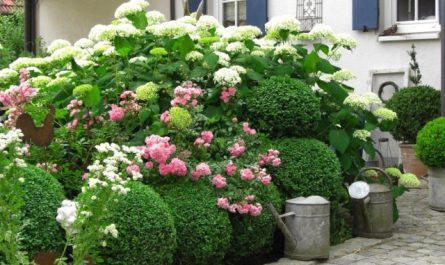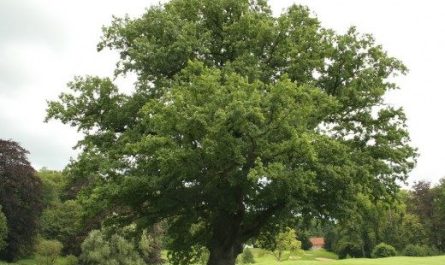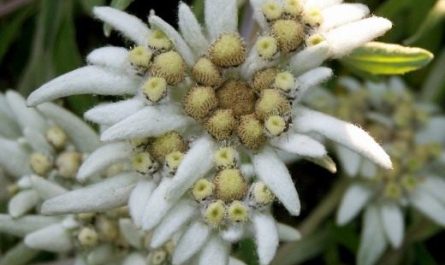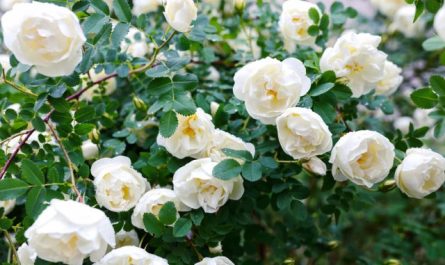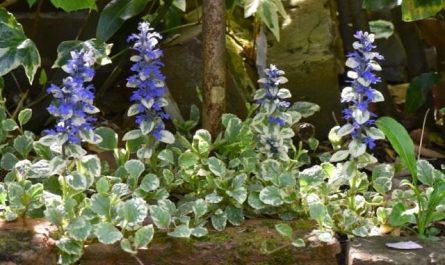Blooming garden roses decorate the garden until winter comes. The main secret of the duration of the “rose season” is the choice of varieties. But the quality of care affects your favorite beautifully flowering shrubs no less. Regardless of whether roses continue to bloom in the fall, or their parade is already over, how they will grow and bloom in the coming season depends on preparation for winter and autumn care. Timely cutting of inflorescences and accuracy with watering are mandatory in caring for roses at the end of the season. What else roses expect from us in the fall, I will tell you in this article.

In the middle zone, autumn planting of roses is rather an exception for seedlings with a closed root system and a matter of personal choice, because the risks of successful wintering are too high. Rose seedlings can be planted with enhanced protection or simply dug in until spring planting.
Roses in autumn want… peace
The ability of plants to continue flowering until frost, the charming appearance of flowers under frost and the desire to prolong flowering for as long as possible should not mislead. Roses will not bloom more diligently in the fall, the better they are looked after. Quite the contrary: if you continue the “summer” regime, the roses’ ability to survive the winter will be at risk.
Active care of roses should actually be completed in July, or at the latest in August. This applies not only to watering, which in autumn, if done, is done in extremely dry periods, less often and not so abundantly. If in doubt, it is better not to water roses at all than to water them too much. Such care will help to avoid the risk of over-watering and constant dampness.
If precipitation exceeds all norms and the soil is too damp, it is better to protect the bushes from soaking by covering them with film from mid-autumn. But the main thing to do with the arrival of autumn is to refuse fertilizing, which is better to stop in advance.
In fact, autumn care of roses comes down only to sanitary measures and competent, unhurried preparation for winter. And if you give the plants a chance to adapt, shoots to ripen, flowering to complete, many problems can be avoided.
All actions, including drying the soil and reducing maintenance, should stimulate the transition to a dormant period and allow natural processes to proceed normally with minimal “outside” interference.

Mulching and loosening are the keys to success
At the beginning of autumn, in the first weeks of September, it is worth checking the condition of the mulch and soil around the bushes. If there are signs of compaction, crusting, or damage to the quality of the protective layer, it is worth taking action as soon as possible. Mulch is usually replaced with new mulch only in the spring, but it can be renewed at any time.
Loosening, providing sufficient air permeability, renewing and leveling the mulch are the simplest procedures that will not take up precious time. But they prevent many problems with preparing bushes for winter and will protect your favorite bushes in case of unpleasant weather surprises, heavy rainfall and sudden temperature changes.
The last feeding is a dubious matter
With the expansion of the choice of fertilizers, special “magic” autumn mixtures have appeared not only for berry bushes or fruit trees, but even for ornamental species. But not all garden crops benefit from autumn feeding. Fertilizers for roses are among the most popular and almost mandatory for every manufacturer. But before being tempted by the instructions, it is worth remembering that a rose is a plant that is best not fed at all in the fall.
If you want to apply autumn phosphorus-potassium fertilizers, do it no later than the first ten days of September, or better yet, in the second half of summer. You can also do two special fertilizings before mid-September:
- miniature and ground cover varieties, as well as all plants that were affected by pests or diseases, did not recover well and grew well this year, can be fed with potassium fertilizers at the beginning of September;
- Adding bone meal, boric acid and wood ash to the tree trunks will improve rooting and “strengthen” almost all roses.

Trim or not?
Full pruning, rejuvenation of bushes, and any other types of pruning on roses are best postponed until spring. Only plants that have become ill this year require partial pruning. All other procedures on roses in the fall can cause more harm than good, stimulating new growth during periods of warming or winter thaw.
If you really don’t like the sloppy appearance of the bushes, you can trim the shoots a little by cutting off the tops and faded, non-woody soft parts. But pruning is mandatory, or rather cleaning roses in the fall in regions with harsh winters comes down to just a few sanitary measures that are carried out only from October or before the shelter itself:
- removal of dry inflorescences and fruits;
- careful removal of the lower leaves of healthy plants;
- removing all leaves from infected bushes;
- cleaning leaves and other debris from under bushes;
- stimulating the maturation of branches by pinching young shoots (if you pinch roses in time, you won’t even have to worry about shortening and trimming).
If the bushes continue to bloom, it is worth remembering that in autumn it is better not to remove the inflorescences “out of habit” as they wither. After all, removing the heads not only prevents fruiting, but also starts the growth of new shoots, not allowing the branches to ripen on time. From dry inflorescences and rose fruits, if your heart so commands, the bushes are “cleaned” with the arrival of frosts.
These pruning recommendations do not apply to climbing roses that are removed from supports. For them, sanitary cleaning, including removal of foliage, is a must. In the fall, unproductive, old branches, unripe parts of shoots, flower buds, and fruit ovaries should be removed from your favorite climbers.
Where the climate is mild, you can safely carry out classic pruning in the fall, adhering to the rules for each variety depending on the flowering characteristics. In the southern regions, it is better to prune all re-flowering varieties in the fall.

When to wrap up for winter?
It is better to be late with covering roses for the winter than to rush. And the problem is not only in damping off, but also in the risk of awakening roses, which will be too warm under early covering. Also, the critical time for normal maturation of shoots in the cold is reduced. Wrapping and hilling up too early can ruin even the oldest and most “reliable” roses.
It is better to wait until all pre-winter procedures are done as long as the weather allows, starting preparations in November, when the soil is already frozen. You can track weather changes from the end of October, stretching the procedures into several stages and finishing the shelter already in November. The benchmark is stable temperatures of about -5 … -8 degrees.
Before starting pre-winter preparation in November, it is worth removing all plant debris from the bushes. Fallen leaves should not be used for composting or covering plants. Treatment with copper sulfate or Bordeaux mixture as a preventive measure is also carried out at this stage of preparation.
Preparation for winter should begin with hilling or digging around the bushes. Further measures for covering depend on the type and variety of rose, its degree of frost resistance and type of flowering. If roses do not need air-dry cover, for example, hybrid tea roses, dry leaves and additional protection with spruce branches are enough. For capricious roses, first bending is carried out, then hilling, and gradually, with a pause of up to 1 week – covering.
Dear readers! It is worth remembering that autumn is also the main time for harvesting cuttings. If you engage in self-propagation of your favorite varieties, you can increase your collection of garden princesses without a significant burden on your budget. During autumn procedures, it is easy to select healthy and strong mature shoots as thick as a pencil.


